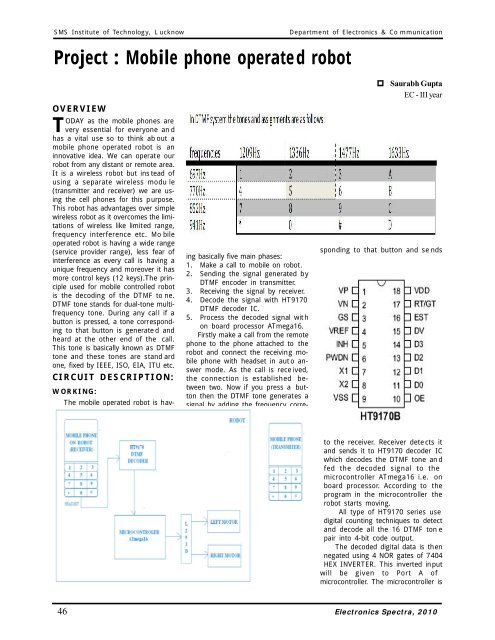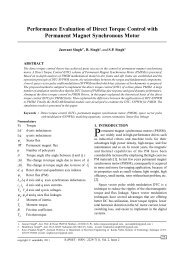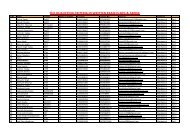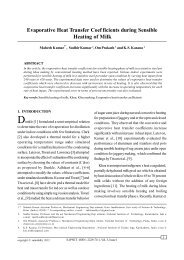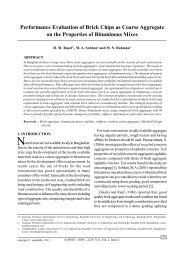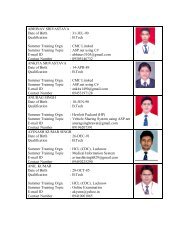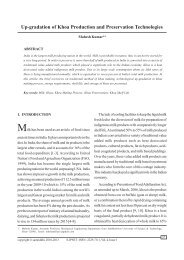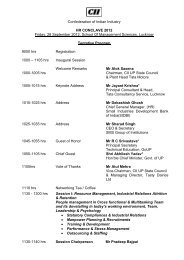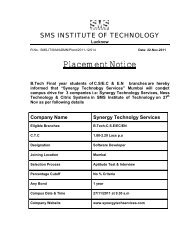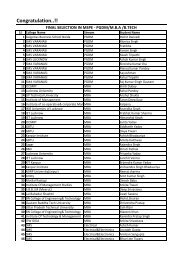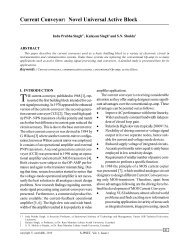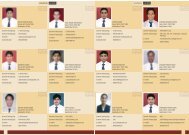Electronics Spectra - SMS Lucknow
Electronics Spectra - SMS Lucknow
Electronics Spectra - SMS Lucknow
You also want an ePaper? Increase the reach of your titles
YUMPU automatically turns print PDFs into web optimized ePapers that Google loves.
<strong>SMS</strong> Institute of Technology, L ucknow<br />
Project : Mobile phone operated robot<br />
Department of <strong>Electronics</strong> & Co mmunication<br />
OVERVIEW<br />
TODAY as the mobile phones are<br />
very essential for everyone an d<br />
has a vital use so to think ab out a<br />
mobile phone operated robot is an<br />
innovative idea. We can operate our<br />
robot from any distant or remote area.<br />
It is a wireless robot but ins tead of<br />
using a separate wireless modu le<br />
(transmitter and receiver) we are using<br />
the cell phones for this purpose.<br />
This robot has advantages over simple<br />
wireless robot as it overcomes the limitations<br />
of wireless like limited range,<br />
frequency interference etc. Mo bile<br />
operated robot is having a wide range<br />
(service provider range), less fear of<br />
interference as every call is having a<br />
unique frequency and moreover it has<br />
more control keys (12 keys).The principle<br />
used for mobile controlled robot<br />
is the decoding of the DTMF to ne.<br />
DTMF tone stands for dual-tone multifrequency<br />
tone. During any cal l if a<br />
button is pressed, a tone corresponding<br />
to that button is generate d and<br />
heard at the other end of the call.<br />
This tone is basically known as DTMF<br />
tone and these tones are stand ard<br />
one, fixed by IEEE, ISO, EIA, ITU etc.<br />
CIRCUIT DESCRIPTION:<br />
WORKING:<br />
The mobile operated robot is having<br />
basically five main phases:<br />
1. Make a call to mobile on robot.<br />
2. Sending the signal generated by<br />
DTMF encoder in transmitter.<br />
3. Receiving the signal by receiver.<br />
4. Decode the signal with HT9170<br />
DTMF decoder IC.<br />
5. Process the decoded signal wit h<br />
on board processor ATmega16.<br />
Firstly make a call from the remote<br />
phone to the phone attached to the<br />
robot and connect the receiving mobile<br />
phone with headset in aut o answer<br />
mode. As the call is rece ived,<br />
the connection is established between<br />
two. Now if you press a button<br />
then the DTMF tone generates a<br />
signal by adding the frequency corre-<br />
Saurabh Gupta<br />
EC - III year<br />
sponding to that button and se nds<br />
to the receiver. Receiver dete cts it<br />
and sends it to HT9170 decoder IC<br />
which decodes the DTMF tone an d<br />
fed the decoded signal to the<br />
microcontroller ATmega16 i.e. on<br />
board processor. According to the<br />
program in the microcontroller the<br />
robot starts moving.<br />
All type of HT9170 series use<br />
digital counting techniques to detect<br />
and decode all the 16 DTMF ton e<br />
pair into 4-bit code output.<br />
The decoded digital data is then<br />
negated using 4 NOR gates of 7404<br />
HEX INVERTER. This inverted input<br />
will be given to Port A of<br />
microcontroller. The microcontroller is<br />
46 <strong>Electronics</strong> <strong>Spectra</strong>, 2010


